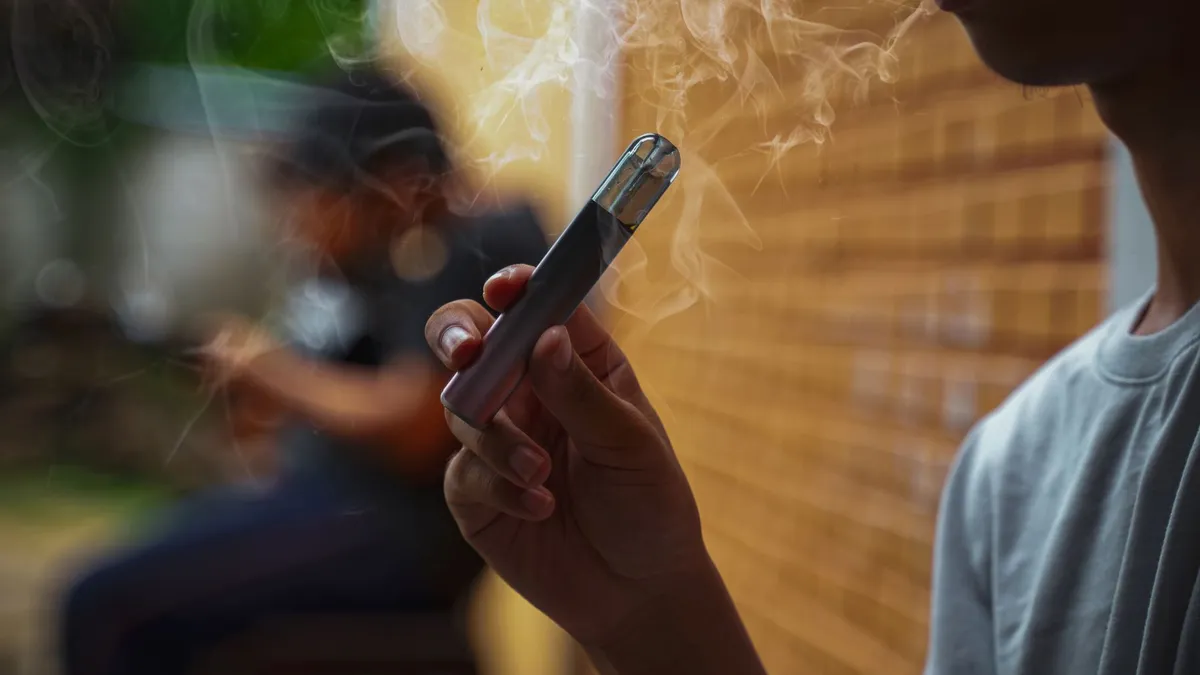Dive Brief:
-
E-cigarette use among middle and high school students declined from 7.7% in 2023 to 5.9% in 2024, the lowest level in a decade, according to the Centers for Disease Control and Prevention. The number of youth in secondary schools who reported vaping decreased from 2.13 million to 1.63 million.
-
High school students reported higher rates of current e-cigarette use, at 7.8% compared to 3.5% of middle school students.
-
Over a quarter of students overall who reported using e-cigarettes said they used the products every day.
Dive Insight:
While high school vape use remains higher than middle school levels, it's a decrease from previous years. In 2023, the CDC reported a decline in high school vape use to 10%, down from 14.1% in 2022. That level further decreased in 2024.
The most recent data is based on the U.S. Food and Drug Administration and CDC's analysis of nationally representative data from the 2024 National Youth Tobacco Survey, which was conducted among 29,861 middle and high school students from 283 schools between Jan. 22 and May 22.
“The continued decline in e-cigarette use among our nation’s youth is a monumental public health win,” said Brian King, director of the FDA’s Center for Tobacco Products, in a statement last week. “But we can’t rest on our laurels, as there’s still more work to do to further reduce youth e-cigarette use.”
CDC continues to stress educators' role in vaping and tobacco use prevention.
"Youth e-cigarette use has declined; however, comprehensive tobacco control strategies, regulations, and enforcement remain critical to reducing youth e-cigarette and nicotine pouch use," a press release from the agency said. "It’s important to talk to youth about the harms of tobacco product use."
Schools have also expended resources on lawsuits spanning multiple states against Juul, one of the largest e-cigarette companies. Over the past few years, the lawsuits have cost the company over $1 billion in settlements.
Attorneys have said that joining lawsuits can help districts recover damages from resources invested in managing vaping-related problems.
In recent years, for example, schools have reported new strategies to reduce vaping such as installing vape detectors, closely monitoring bathrooms, and banning the use of USB thumb drives, which some vaping devices are designed to mimic the appearance of.








 Dive Awards
Dive Awards






